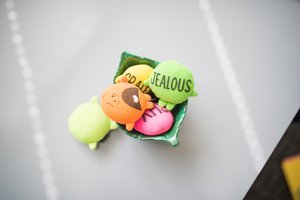How Does Play Therapy Benefit Kids?
Knowing what our children are feeling and how we can help them is a desire of every loving parent. With that said, it can be really hard to know what children need when they don’t yet have the language and skill to offer that insight. Many times, it feels like we’re trying to mind-read what our children are feeling.
We all know that our kids experience big feelings just like we do; however, tuning into those big emotions can be challenging for our little ones. Expressing feelings is a skill we model, and most children don’t just know how to explain to adults around them what they need.
That is why play therapy is a great option to help your kiddo get the chance to walk through these emotions in a safe setting!
Play is a child’s primary language. Play therapy is a child-led therapy session. It opens a safe environment for your child to feel free to communicate their experiences and emotions through their natural language of play.
Children will often use play to express themselves, and they may feel more comfortable in this type of environment to confront big feelings. While there are many different types of play therapy, opening up the possibilities of what type of play therapy the child wants to use is a key to allowing the child to express what they are feeling and how they would like to express themselves.
Let’s dive into the different types of play therapy and how they may benefit your child:
Sand Play
A creative and grounding way to play, sand allows children to create a world that represents their feelings and conflicts. Through playing with sand, children can express their imagination and share insight into what’s going on in their inner worlds. Sand play helps bring awareness to any fears, thoughts, and memories that the child might be experiencing. It creates a safer space for the child to share openly. It’s also a really fun sensory experience for kiddos!
Art Play
On a similar note to sand play, creating art (of any form) can help kids communicate and express themselves in a natural way. Without having to use their words, art gives children (and adults too!) the ability to release what they’re holding inside and process big emotions. Art play can help reduce anxiety and feelings of isolation, as well as offer a supportive channel for creativity and self-expression.
Block Play
One of the ways block play can help is by releasing anger. Throwing a ball at blocks can be an excellent way for children to healthily express their anger. This can also help reduce any behavioral problems that children may be experiencing as well. We suggest foam blocks just in case your kiddos get any fun ideas such as throwing the blocks instead!
Bubbles Play
In general, bubbles are fun! They act as a stress-relieving activity for kids and help them feel relaxed in preparation for other types of play. In Listening to My Body: Activities for Kids, we offer tips for creating big bubbles to manage anger.
More benefits of play therapy:
Reduction in anxiety and stress
Reduction in behavioral problems
Learning skills to walk through daily life
Processing and healing trauma
Can help children who have trouble making friends
Have learning disabilities
Have trouble with sleep or nightmares
Experienced the loss of a loved one
Have chronic illness
If you feel play therapy would be helpful for your kiddo, feel free to reach out to our expert team at Healing Pathways of Houston.

